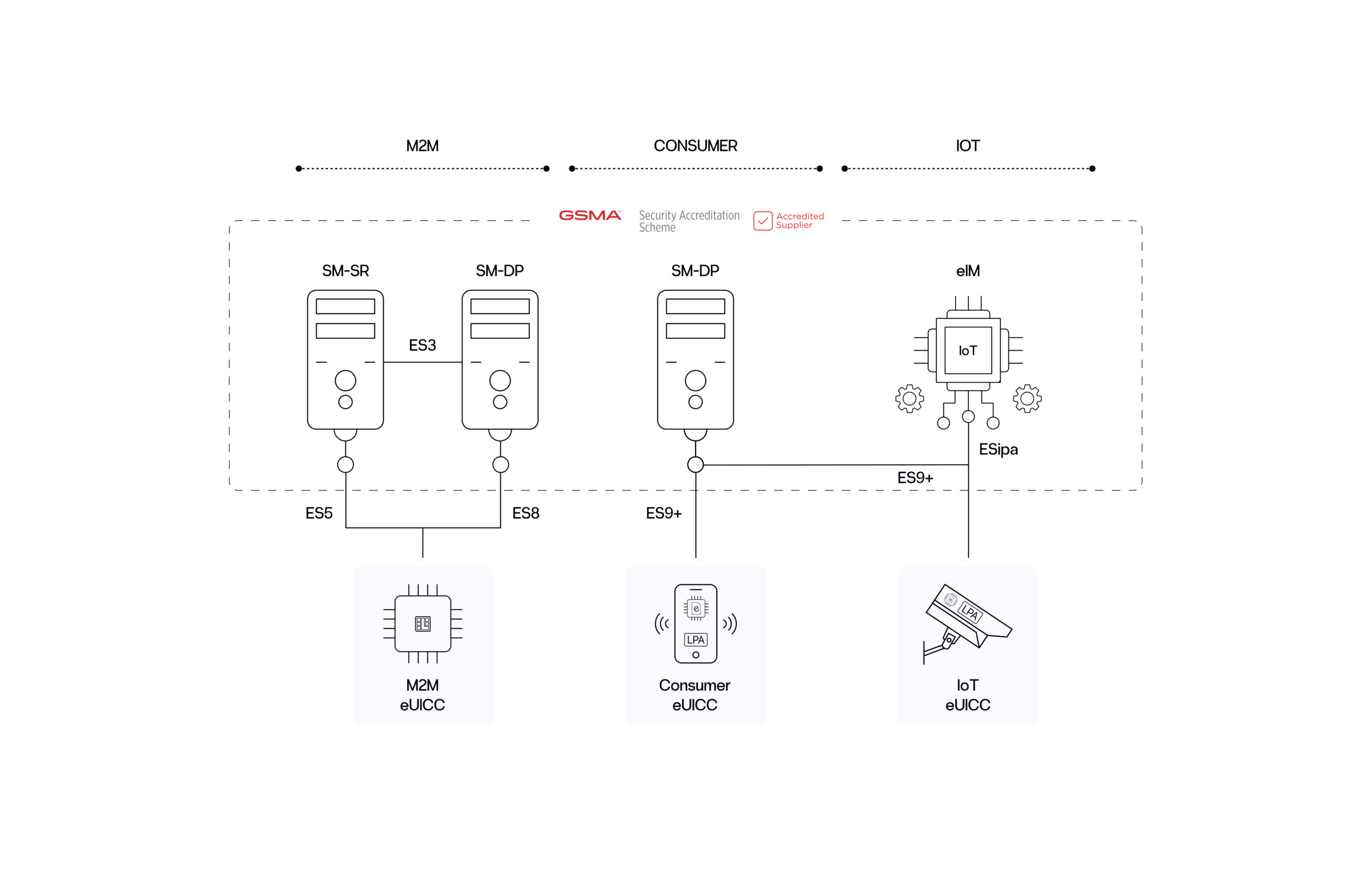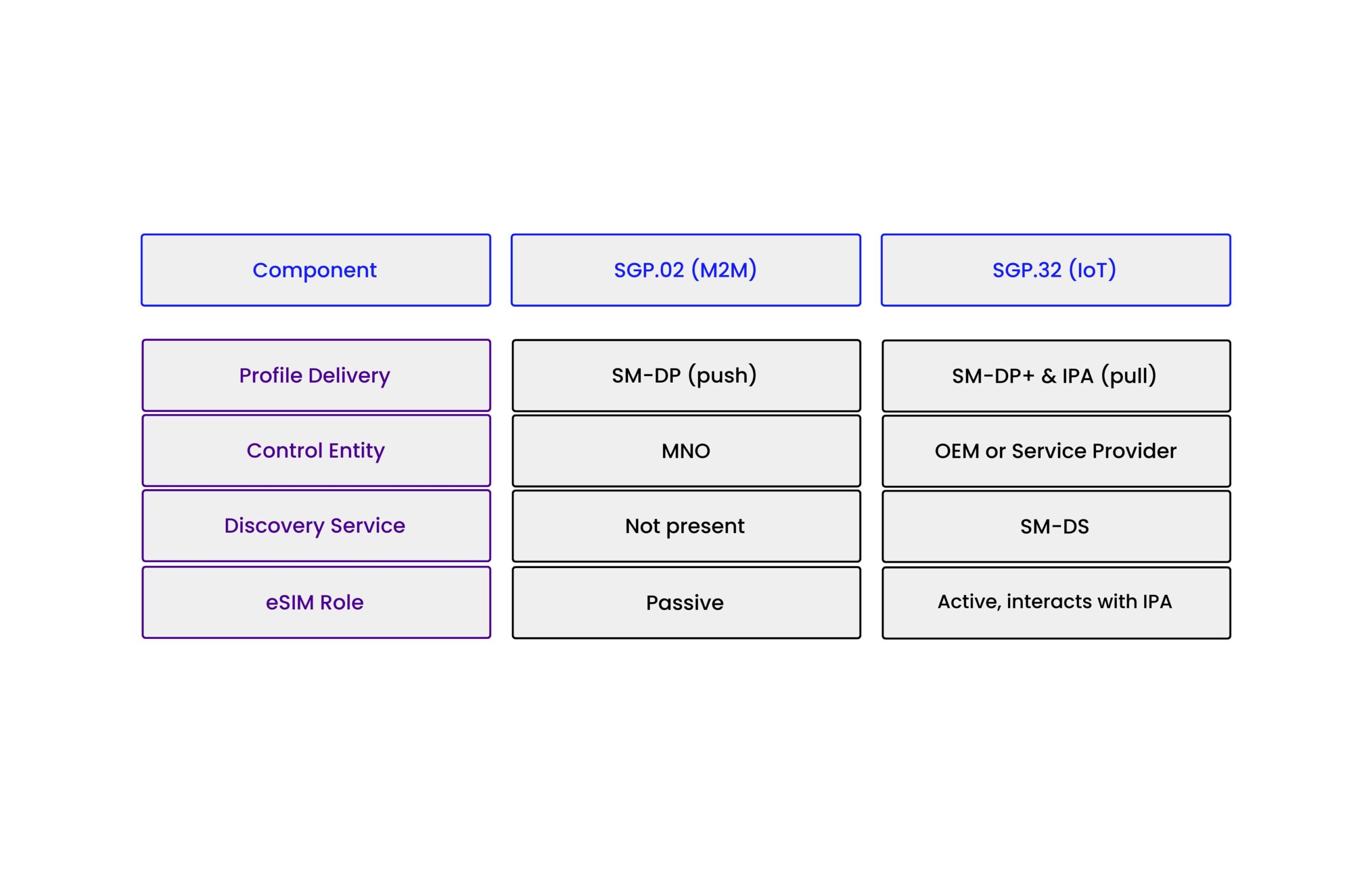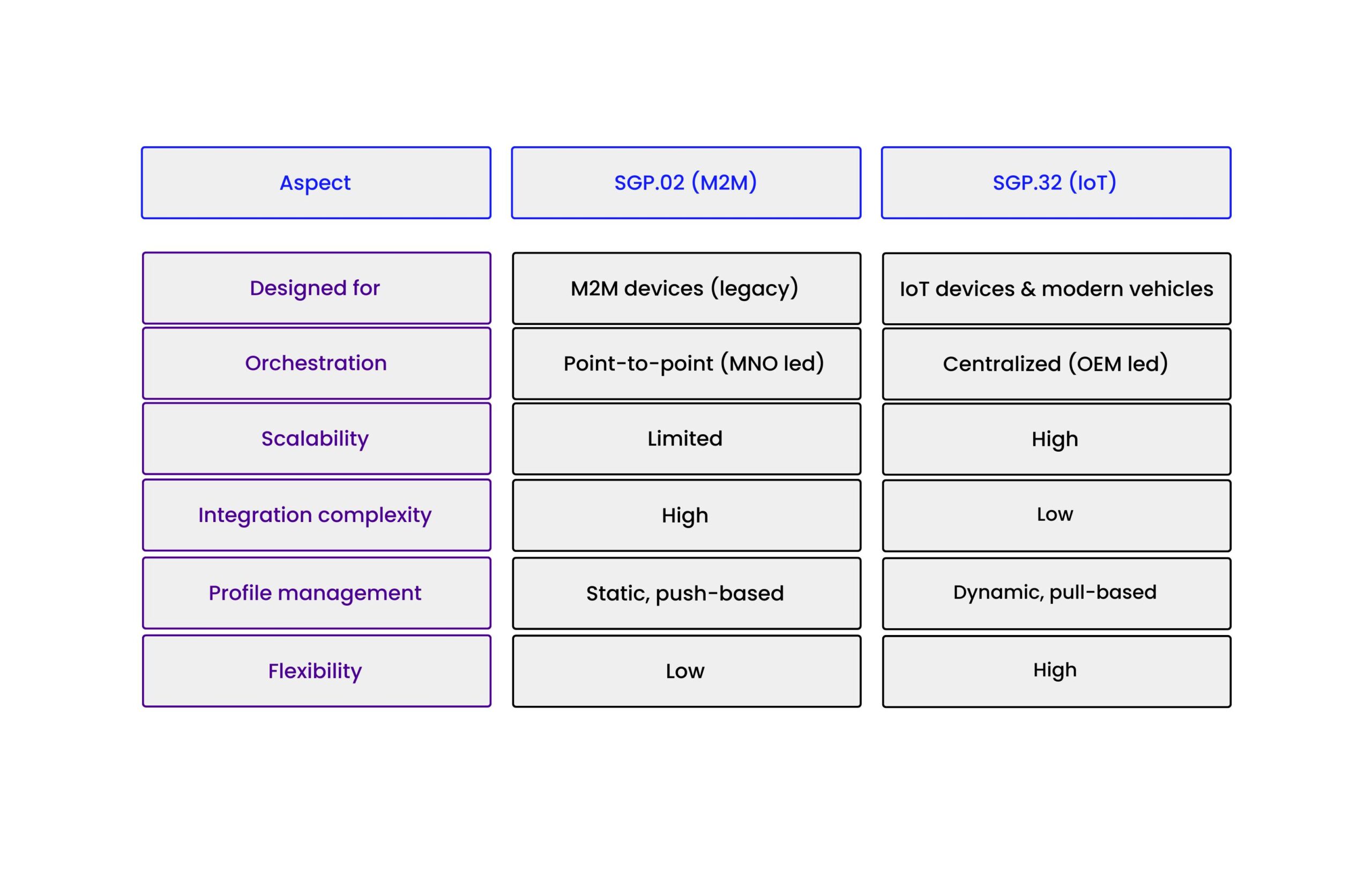
SGP.02 was originally developed to serve M2M applications—smart meters, industrial devices, and embedded automotive modules—where SIMs are not accessible and must be managed remotely. The model worked well in the early phases of automotive connectivity, when static profiles and one-time provisioning were sufficient.
However, as connected car services have matured, new demands have emerged: dynamic connectivity management, regulatory compliance across regions, over-the-air service changes, and better integration with cloud-based platforms. SGP.02’s architecture, which relies on point-to-point communication between the MNO and the eUICC via the SM-DP (Subscription Manager – Data Preparation), lacks the scalability, orchestration capabilities, and automation needed for today’s complex, global automotive deployments.
Its limited support for multi-MNO environments, lack of standardized remote orchestration, and static provisioning model are now seen as barriers to innovation in connected vehicle platforms.
The SGP.32 specification, also referred to as the GSMA eSIM IoT Architecture, addresses these limitations by introducing a more flexible and modular framework tailored for large-scale IoT deployments—including connected vehicles.
Key advantages of SGP.32 for the automotive sector include:
- Remote and Dynamic Connectivity Management: Unlike SGP.02, SGP.32 introduces IoT Remote SIM Provisioning (IoT RSP) mechanisms that support centralized orchestration, allowing OEMs to remotely manage profile download, switching, and deletion—without relying on operator-led point-to-point integration.
- Decoupled Profile Management: The use of IoT Profile Assistants (IPA) and Factory Profile Assistants (FPA) enables bootstrap provisioning in manufacturing and dynamic profile assignment later in the lifecycle. This is ideal for automotive production models that require shipping vehicles globally and assigning local connectivity profiles post-sale.
- Managed Connectivity at Scale: SGP.32 makes it easier to implement connectivity management platforms that can orchestrate entire fleets of vehicles, optimize network usage, monitor quality of service, and automate profile changes based on region, performance, or commercial agreements.
- Interoperability and Future-Proofing: The new standard promotes vendor-neutrality and ensures interoperability across multiple MNOs, SM-DPs, and eUICC vendors—making it a more sustainable and future-ready solution for OEMs.
According to the following diagram, one of the main aspects that differ when comparing both architectures is the technology components included.



In the evolving eSIM ecosystem, SGP.22 (Consumer eSIM architecture) can play a key enabler role in the transition from SGP.02 (M2M) to SGP.32 (IoT), especially through hybrid architectures that combine the flexibility of consumer-grade eUICCs with the centralized orchestration capabilities of the new IoT standard. While SGP.02 lacks the agility and remote management features required for modern automotive and IoT deployments, and SGP.32 is still being adopted and implemented, SGP.22-compliant eSIMs offer a mature, proven, and widely supported solution for remote profile provisioning using LPA (Local Profile Assistant) frameworks.
By combining an SGP.22 eSIM with an SGP.32 eIM (eSIM IoT Remote Manager), OEMs and service providers can begin to benefit from the centralized orchestration and automated profile management offered by SGP.32, while continuing to leverage existing SGP.22 infrastructure and tools. This hybrid setup allows for intermediate and immediate solutions, supporting faster market readiness and smoother migration strategies. It enables new business models such as post-sale profile activation, connectivity orchestration via cloud platforms, and simplified global logistics through single-SKU manufacturing—all while maintaining compatibility with existing consumer and operator ecosystems.
With these enhancements, it’s no surprise that automotive OEMs are increasingly requesting SGP.32-compliant solutions from their eSIM vendors, Tier 1s, and MNO partners. As connected services become standard across vehicle segments—not just in premium models—SGP.32 allows manufacturers to scale connectivity in a cost-effective and agile way.
One of the most attractive benefits is the enablement of a single SKU strategy, where a vehicle is manufactured with a generic factory profile and later assigned a localized connectivity profile based on market or customer. This dramatically simplifies global logistics, reduces time-to-market, and supports new digital business models such as usage-based insurance or in-vehicle subscriptions.
The move from SGP.02 to SGP.32 is more than a technical upgrade—it’s a strategic leap toward a new era of managed automotive connectivity. SGP.02 will continue to exist for legacy deployments, but it is clear that the future lies in flexible, programmable, and remotely managed connectivity ecosystems, powered by SGP.32.
Automotive OEMs, Tier 1 suppliers, and connectivity providers must now align their roadmaps with this transition, ensuring readiness to deliver and manage SGP.32-based solutions at scale. The industry is shifting gears—and SGP.32 is in the driver’s seat.
Valid supports IoT and Automotive OEMs by providing flexible, standards-compliant solutions that include eSIM, eIM, both versions of IPA (IPAd ad IPAe), Connectivity Management Platforms (CMP) and bootstrap connectivity. OEMs can choose the best IPA solution for their needs, with IPAd available for Android and a wide range of Linux distributions and IPAe suited for a broad range of implementations with minimal device adaptation requirements.
Get ready for the next connectivity revolution with Valid. For a broader view on how SGP.32 is redefining connectivity beyond automotive—impacting IoT and M2M deployments at scale — explore our detailed comparison here.



